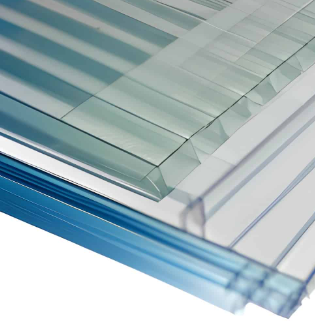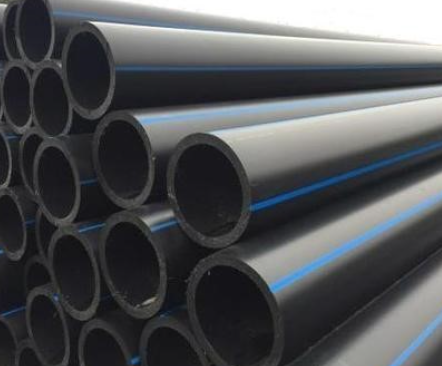- Understanding the Role of Geomembrane Liners in Waste Management
- Innovations in Geomembrane Liners for Water Management
- Geomembrane Liners: A Comprehensive Guide
- The Future of Geomembrane Liners in Civil Engineering
- Geomembrane Liners: Enhancing Landfill Stability
Manager:Alvin Wang
WhatsApp:+62 8983806051
Tel:+86 10-5797-1075
Email:steelwang@okorder.com
Address:3rd Floor, No.2 Building, No.1 Sanlihe Road
Which is stronger polycarbonate or HDPE?
In the realm of geomembranes, particularly in applications demanding resilience, durability, and strength, the debate often revolves around two prominent contenders: polycarbonate and high density polyethylene (HDPE). As the demands for reliable containment solutions escalate across various industries such as agriculture, construction, mining, and environmental protection, understanding the strengths and weaknesses of these materials becomes paramount. In this article, we delve into the intricacies of composite geomembranes, focusing on the comparative strength of polycarbonate and HDPE, to determine which material stands stronger in the face of demanding conditions.

Understanding Composite Geomembranes
Composite geomembranes amalgamate multiple materials to harness the individual strengths of each component. Typically, these geomembranes consist of layers of different polymers, textiles, or coatings bonded together to create a unified barrier system. This strategic combination enhances the overall performance of the geomembrane, making it adept at withstanding diverse environmental stressors such as chemical exposure, temperature fluctuations, and mechanical forces.
Strength in Structure: Polycarbonate
Polycarbonate, renowned for its exceptional strength-to-weight ratio, emerges as a formidable candidate in the realm of composite geomembranes. Its inherent toughness stems from the molecular structure characterized by carbonate groups, endowing it with robust mechanical properties. Polycarbonate exhibits high impact resistance, making it suitable for applications where the geomembrane may encounter puncture risks or heavy loads.
Moreover, polycarbonate boasts remarkable tensile strength, allowing it to withstand stretching forces without succumbing to deformation or rupture. This attribute proves invaluable in scenarios where the geomembrane is subjected to elongation stresses, ensuring prolonged structural integrity and containment efficacy. Additionally, polycarbonate exhibits excellent dimensional stability, maintaining its shape and structural integrity over extended periods, thereby minimizing the risk of leakage or breach.
The versatility of polycarbonate extends to its compatibility with various environmental conditions. It demonstrates exceptional resistance to UV radiation, preventing degradation and preserving its mechanical properties even under prolonged exposure to sunlight. Furthermore, polycarbonate exhibits superior chemical resistance, enabling it to withstand corrosive substances commonly encountered in industrial and agricultural settings.
Navigating Challenges: hdpe Geomembrane
Conversely, high density polyethylene (HDPE) geomembranes present a compelling alternative characterized by their resilience and adaptability. HDPE, a thermoplastic polymer renowned for its robustness and flexibility, offers an array of advantages in containment applications. Its molecular structure, comprising long chains of ethylene monomers, imparts remarkable strength and durability to the geomembrane.
HDPE geomembranes excel in puncture resistance, thanks to their dense molecular arrangement and intermolecular forces. This attribute renders them adept at withstanding sharp objects or abrasive materials, minimizing the risk of perforation and ensuring reliable containment. Additionally, HDPE exhibits impressive tear resistance, allowing the geomembrane to resist propagation of damage and maintain its structural integrity even in challenging environments.
The flexibility of HDPE geomembranes proves instrumental in conforming to irregular terrain or substrate surfaces, facilitating seamless installation and minimizing the need for additional reinforcements. This attribute enhances the efficiency and cost-effectiveness of containment projects, particularly in applications where terrain variability poses logistical challenges.
Moreover, HDPE geomembranes demonstrate commendable chemical resistance, withstanding exposure to a wide range of acids, alkalis, and solvents prevalent in industrial and agricultural settings. This resistance mitigates the risk of chemical-induced degradation, ensuring the long-term performance and reliability of the containment system.
Comparative Analysis: Strengths and Weaknesses
In comparing the strengths of polycarbonate and HDPE geomembranes, several key factors come into play. Polycarbonate excels in impact resistance and dimensional stability, making it ideal for applications requiring robust containment solutions in challenging environments. Its superior UV and chemical resistance further bolster its suitability for outdoor applications subject to harsh weather conditions and chemical exposure.
Conversely, HDPE geomembranes stand out in puncture and tear resistance, offering dependable containment solutions in scenarios where mechanical forces pose significant risks. The flexibility of HDPE facilitates ease of installation and adaptability to diverse terrain, streamlining construction processes and enhancing project efficiency. Additionally, HDPE's commendable chemical resistance ensures longevity and reliability in environments where exposure to corrosive substances is inevitable.
However, each material also has its limitations. Polycarbonate, while highly durable, may exhibit lower flexibility compared to HDPE, potentially posing challenges in installations requiring significant contouring or deformation. Additionally, HDPE geomembranes, while resilient to chemical exposure, may experience oxidative degradation over time when exposed to certain environmental conditions, necessitating careful consideration of long-term performance factors.

Conclusion
In the realm of composite geomembranes, the choice between polycarbonate and HDPE hinges on the specific requirements of the containment application and the prevailing environmental conditions. While polycarbonate offers exceptional impact resistance and dimensional stability, HDPE excels in puncture and tear resistance, as well as flexibility. Both materials exhibit commendable chemical resistance, ensuring reliable containment in diverse industrial, agricultural, and environmental settings.
Ultimately, the selection of the optimal geomembrane material necessitates a comprehensive evaluation of factors such as mechanical properties, chemical resistance, installation requirements, and long-term performance considerations. By leveraging the inherent strengths of polycarbonate and HDPE geomembranes, stakeholders can implement robust containment solutions tailored to the unique challenges of their projects, ensuring the integrity and sustainability of critical infrastructure and environmental protection initiatives."
-
2024-06-13Geomembrane is not plastic cloth






